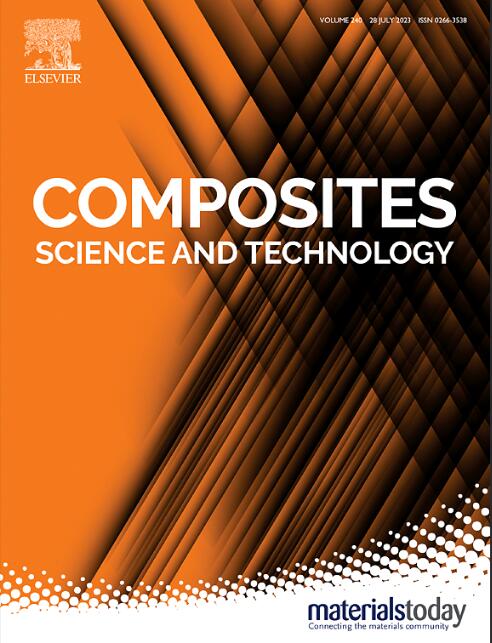基于贝叶斯优化的1D-CNN超声导波CFRP层合板分层分类
IF 8.3
1区 材料科学
Q1 MATERIALS SCIENCE, COMPOSITES
引用次数: 0
摘要
本研究提出了一种基于贝叶斯优化的浅一维卷积神经网络(1D-CNN),用于利用原始激光超声导波(LUGW)数据对碳纤维增强聚合物(CFRP)层合板的分层进行分类。该数据集包括来自10个交叉CFRP层压板的200多万个波形,包括一个未损坏的和九个不同大小和深度的分层,从三个方向测量,总共30个不同的类别。采用蒙特卡罗随机抽样、基于随机森林仿真器的灵敏度分析和树结构Parzen估计(TPE)-贝叶斯优化与超带修剪相结合的系统方法对关键超参数进行微调,设计出轻量级、高效的体系结构。经分层K-Fold交叉验证(Stratified K-Fold Cross-Validation, SKCV)和所提出的逆SKCV证明,优化后的1D-CNN在多类分类中准确率、精密度、召回率、F1-Score和AUC-ROC均达到99.99%,表现出近乎完美的性能。该模型在不需要信号预处理的情况下泛化的有效性是正则化技术(如Dropout, Elastic Net, Early stop和Reduce-On-Plateau学习率)的结果。此外,它的轻量级架构使其适合部署在消费者级硬件上,具有未来实时监控应用程序的强大潜力。本文章由计算机程序翻译,如有差异,请以英文原文为准。

Bayesian-optimized 1D-CNN for delamination classification in CFRP laminates using raw ultrasonic guided waves
This study proposes a Bayesian-optimized shallow 1D-Convolutional Neural Network (1D-CNN) for classifying delamination in Carbon Fiber Reinforced Polymer (CFRP) laminates using raw Laser Ultrasonic Guided Wave (LUGW) data. The dataset comprises over 2 million waveforms from ten cross-ply CFRP laminates, including one undamaged and nine with delamination of varying sizes and depths, measured from three directions, totaling 30 distinct classes. A systematic approach combining Monte Carlo Random Sampling, Random Forest Emulator-based sensitivity analysis, and Tree-Structured Parzen Estimator (TPE)-Bayesian Optimization with Hyperband Pruning was employed to fine-tune critical hyperparameters and design a lightweight, efficient architecture. The optimized 1D-CNN exhibited near-perfect performance, as evidenced by Stratified K-Fold Cross-Validation (SKCV) and the proposed Inverse SKCV, with 99.99 % accuracy, precision, recall, F1-Score, and AUC-ROC in multi-class classification. The model's effectiveness in generalizing without the need for signal preprocessing is a result of regularization techniques such as Dropout, Elastic Net, Early Stopping, and a Reduce-On-Plateau learning rate. Furthermore, its lightweight architecture makes it suitable for deployment on consumer-level hardware, with strong potential for future real-time monitoring applications.
求助全文
通过发布文献求助,成功后即可免费获取论文全文。
去求助
来源期刊

Composites Science and Technology
工程技术-材料科学:复合
CiteScore
16.20
自引率
9.90%
发文量
611
审稿时长
33 days
期刊介绍:
Composites Science and Technology publishes refereed original articles on the fundamental and applied science of engineering composites. The focus of this journal is on polymeric matrix composites with reinforcements/fillers ranging from nano- to macro-scale. CSTE encourages manuscripts reporting unique, innovative contributions to the physics, chemistry, materials science and applied mechanics aspects of advanced composites.
Besides traditional fiber reinforced composites, novel composites with significant potential for engineering applications are encouraged.
 求助内容:
求助内容: 应助结果提醒方式:
应助结果提醒方式:


